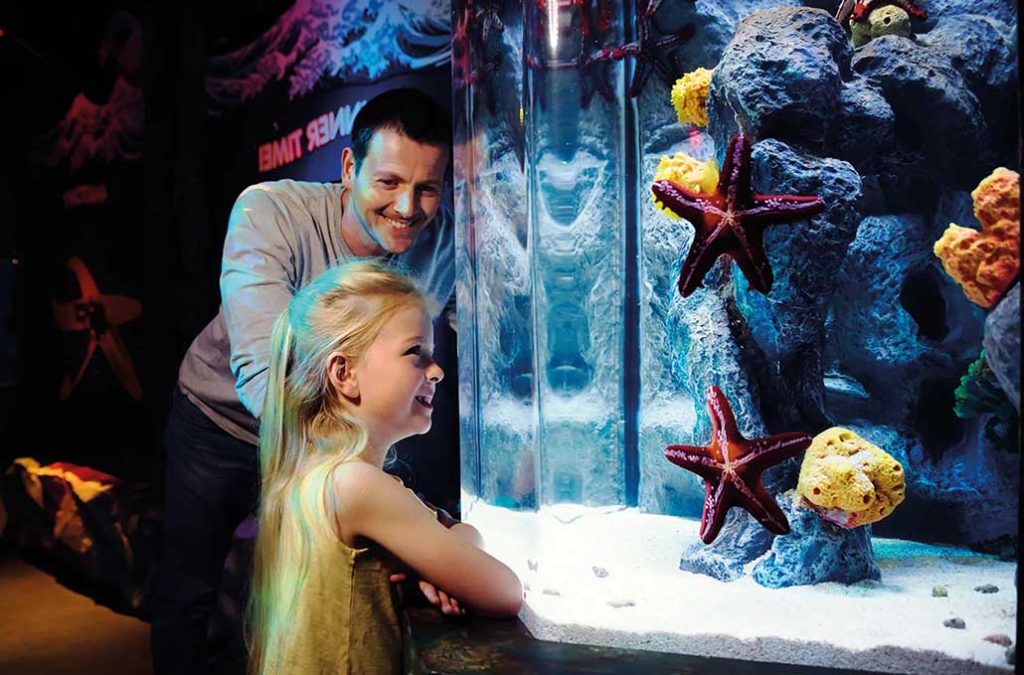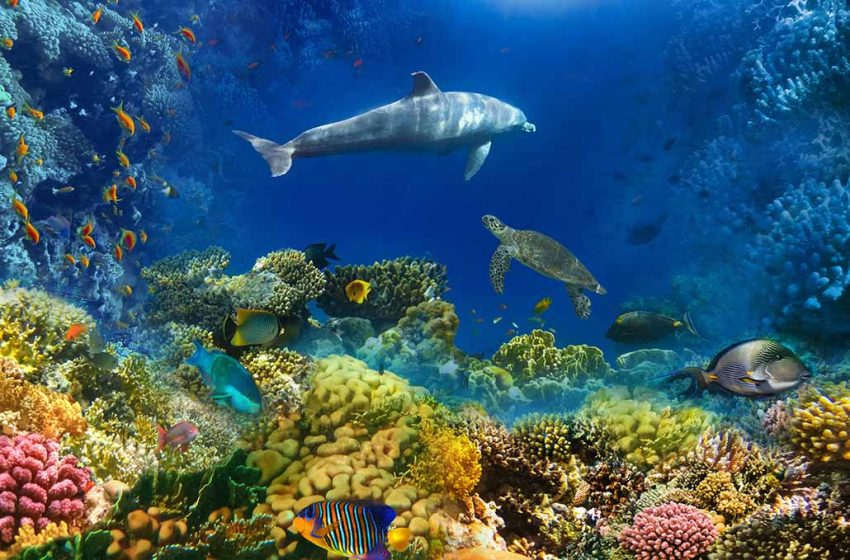Every visit to SEA LIFE feels like opening a magical door into the deep ocean. A vibrant, colorful marine world unfolds before your eyes. Whether you’re a curious adult or a wide-eyed child, there’s a unique moment of wonder waiting for you. SEA LIFE is more than just an aquarium. It’s a living ocean school, a surprising natural lab, and a place where imagination and knowledge awaken and thrive.
1. Daily Expert Talks: Knowledge Flowing Right into Your Ears
One of the most anticipated moments at SEA LIFE is the scheduled daily expert talks. Standing in front of towering aquarium windows, listening to marine biologists explain the mysteries of sharks, turtles, seahorses, and coral reefs feels like attending a live story about the origins of life and the wonders of ecosystems. Unlike dry textbook language, SEA LIFE’s storytelling approach transforms science into captivating adventure tales.
Children often gather around, eyes glued to the presenters’ hands as they flip through colorful visuals—gasping in awe, eagerly asking questions. The interaction is fluid and engaging. Adults too find themselves learning fascinating new facts—like how male seahorses are the ones who give birth, or how sharks constantly replace their teeth, or that octopuses have three hearts. Every detail is delivered vividly, turning each visitor into a “junior marine biologist” in their own right.
2. Self-Guided Tours & School Workshops: The Real World Beyond the Classroom
SEA LIFE offers guided learning experiences tailored for schools at many of its locations. These aren’t just casual walkthroughs; they’re thoughtfully designed educational journeys with activity booklets, learning checkpoints, and themed discovery paths that turn the aquarium into a living classroom.
Elementary students carry guide maps in hand, searching for specific “learning stations” where they complete hands-on tasks—recording jellyfish shapes, observing coral color changes, or interacting with screens that explain the food chain. The programs align closely with national curriculum standards, making SEA LIFE a popular destination for school science trips.
For older students, the workshops go even deeper. Themes like marine pollution, microplastics, and coral bleaching are explored through a combination of live observation and group discussion. It’s not just sightseeing—it’s immersive inquiry. SEA LIFE brings abstract environmental issues into sharp focus with real-world exhibits and engaging educational tools.

3. Multimedia Experiences: Dive Into Shark Worlds and Digital Art Aquariums
At SEA LIFE’s “Shark Mission” exhibit, the first thing that grabs your attention is a massive curved screen that feels like an underwater portal. As you approach, you’re instantly submerged in a digital ocean filled with sharks gracefully gliding overhead—it’s as if you’re trespassing in their kingdom.
This isn’t just a flashy visual display. SEA LIFE uses augmented reality (AR) and interactive technology to let visitors experience the world from a shark’s perspective. Touching certain points on the screen reveals how sharks detect electrical fields, or lets you play an interactive hunting game where you chase prey like a real shark.
Meanwhile, the “Art Aquarium” offers a completely different atmosphere—an immersive artistic experience. In certain SEA LIFE locations, this space is filled with color-changing lights, shimmering water effects, and coral-inspired projections that make the room feel dreamlike. Sea creatures dance across the walls, and every step you take creates rippling waves or floating jellyfish on the ground. Children dash around giggling, trying to “catch” virtual fish, while adults pause for photos, lost in the magic of underwater-inspired art and ambiance.
4. Behind-the-Scenes Tours: Discover the Secret Lives of Sea Creatures
For those with a deeper curiosity about marine life, SEA LIFE’s “Behind the Scenes” tours offer a rare peek into the aquarium’s hidden world. While most visitors see only the public-facing displays, this experience takes you into the heart of aquarium operations, where sophisticated systems maintain the delicate marine ecosystems.
Down a quiet staff corridor lies a control room equipped with advanced monitoring equipment. Guides explain how they adjust water temperature, salinity, and pH levels to replicate different oceanic environments. In the animal care zone, you’ll find the rehabilitation pools—spaces not open to the general public—where injured sea turtles or fish entangled in plastic waste receive expert treatment.
One of the most thrilling moments is the feeding experience. Guests get to hand-feed sea stars, urchins, and other gentle creatures—and in some cases, even participate in supervised feedings of rays or sharks. Standing inches away from a massive predator, offering food, is an unforgettable moment no textbook or documentary could ever replicate.
5. Annual Themed Events: Deeper Discovery and Marine Conservation

SEA LIFE goes far beyond daily exhibits by hosting a series of annual events that blend fun with important environmental messages. Among the most beloved is “Shark Week,” a week-long celebration packed with special displays, workshops, and talks—all centered around sharks.
Children embark on a “Shark Knowledge Challenge,” solving quiz-based adventures about species, behavior, and conservation status. Each correct answer earns a fin-shaped sticker, and collecting them all unlocks a limited-edition SEA LIFE shark badge. Adults gravitate toward the expert-led conservation seminars, which provide up-to-date insights into shark fishing, fin trade, and international protection efforts.
Other signature events include “World Ocean Day,” seasonal environmental art shows, and the “Plastic-Free” campaign exhibition. These collaborative efforts often involve local conservation groups, artists, and schools, and aim to inspire real-world action through hands-on learning and community engagement.
6. Learning Without Age Limits: Curiosity for All Generations
At SEA LIFE, learning knows no age. For many children, it’s where they meet their first sea creature. For adults, it’s where they rediscover their bond with nature. Families frequently choose SEA LIFE for weekend outings—not just because it’s fun, but because it nurtures learning in the most joyful and organic way.
In one quiet corner of SEA LIFE London, an elderly guest was seen standing silently before the jellyfish tank. When asked why, he replied, “I never imagined that something so delicate could be among Earth’s oldest living creatures.” That moment captured the essence of what SEA LIFE offers—personal connection, emotional depth, and meaningful discovery.
SEA LIFE uses a multi-sensory approach to transform complex scientific knowledge into emotional understanding. It helps children grasp ecology and encourages adults to reconsider humanity’s relationship with the ocean. This unique ability to educate through emotion, beauty, and experience is what makes SEA LIFE a truly irreplaceable destination.

